
Lhoba People in Sountheast of Himalayas
If you want to experience a small window to distant hunter-gatherer past of our species, Tibet offers a surprising and unique experience: The Lhoba people. Lhoba people are the smallest of the 56 ethnic groups in China and live in South-eastern Tibet. Most of these sourherners (Lhoba means “southerners” in Tibetan language) do not traditionally self-identify as a single entity and speak different languages but considered the same Lhoba minority by Chinese and Tibetans. Lhoba population consists of many tribes; Bogar, Ningbo, Adi and Tajin peoples to name some. Today there are about 4000 Lhoba people in China but many Lhoba people also live in northeast India, Bhutan and Myanmar.
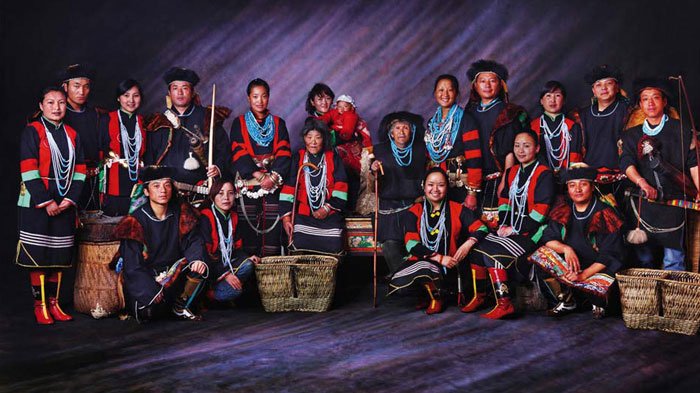 Lhoba people
Lhoba people
History of Lhoba and their living environment
Unfortunately, not much is known about the history and origin of Lhoba people. Because the Lhoba language do not have a written script and prior to 1950s all Lhoba people were illiterate, almost nothing is written by Lhoba people about their culture and history. Living in one of the most mountainous region and being one of the most isolated human group in the world also do not help.
 Lhoba village
Lhoba village
We know that the Southern regions of Tibet were once occupied by India but in 7th century, Tibet succeeded unifying tribes and started to real this region as well as the rest of the Tibet. But, it is not known the ancestors of Lhoba people were occupying the region at that time or came from somewhere else later.
What we know for sure is that from the conquest of Tibet to 1950s, Lhoba people were frequently bullied and oppressed by the Tibetans. Under the strict feudal society of Tibet, Lhoba people were considered inferior and "wild”. They were not allowed to leave their area without permission and were not allowed to marry Tibetans.
Language and religion of Lhoba
Although there are only 5 to 6 thousand Lhoba people in the world, they have surprisingly large language diversity. Lhoba speaks Sino-Tibetan languages named Adi and Bokar; as well as Idu Mishmi. These languages are not mutually intelligible and Lhoba people do not have any written script.
 Lhoba students
Lhoba students
Most Lhoba people are animist but a significant portion of the population believes in Tibetan Buddhism (although they still mix animist traditions with this relatively new religion). As animists, Lhoba people believe that everything has an immortal spirit called “Wuyong”. The concept of Wuyong has a significant influence on the life and work of Lhoba people. All living things in the world are subject to wuyong and it brings bad fortune to offend a wuyong. The Lhoba people are very superstitious and have many taboos related to Wuyong.
Lhoba religion also has various natural gods. Their main god is tiger which is the most dangerous animal in the region. There are 30 totems and gods in the religion like the mountain, the tree, dog, pig, leopard, bear, pig, moon, sun and ox.
Lhoba religion practices include shamanism, spiritual healing, fortune-telling and wizardry. The Lhoba fortune-telling practice is quite unique as they read patterns (colour, shape and blood vessels) in a freshly harvested liver. Oddly shaped blood vessels on this freshly harvested liver are bad omens.
Customs and dress, cuisine and life style of Lhoba
The customs and dress of Lhoba people vary by tribes and region. But in general, Lhoba men clothing reflects their hunting lifestyle. They wear knee-length, sleeveless, buttonlessblack jackets made of sheep's wool with hats made from bear skin or bamboo stripes. The men also wear swords and carry bows and arrows. Lhoba women wears skirts made from sheep's wool and narrow-sleeved blouses. Both men and women do not wear shoe ware.
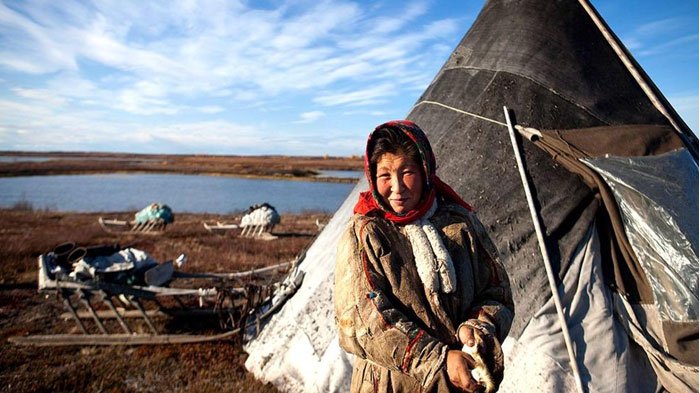 Lhoba people
Lhoba people
Although the diet varies in different regions, roasting is the most popular way of cooking. They roast both animal and plant based food. The popular way of cooking is putting the game in fire and covering by ashes to prepare for eating. Other than the game they hunt, they consume maize or millet flourdumplings, rice or buckwheat. The communities near Tibetan people, the cuisine also includes potatoes and spicy food.
In old days, Lhoba people were divided into two classes - "maide" and "nieba". The maides considered themselves nobles and saw the niebas inferior and at their disposal. The maides were allowed to hold nieba slaves and even if a nieba became rich, he could not be considered maide.
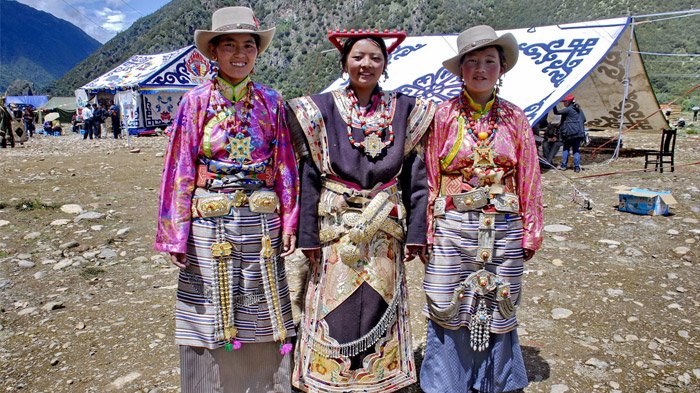 Lhoba dress style
Lhoba dress style
Today, most Lhoba live at the foot of the Himalayas, in the high mountains and deep valleys. Thickly forested area is sparsely populated. The region is called Pemako. Lhoba lives in villages on high terraces. Since the area does not allow grain cultivation, until very recently, most Lhoba people depended on hunting. Very basic agriculture to supplement hunting was practiced. Today, most Lhoba people are Lhoba households are farmers but hunting is the central activity of Lhoba men. Starting from a very young age, and young boys start to join adults in hunting. As they mature, they hunt animals in deep forest alone or by teams. Even today, hunting dogs play a significant part in Lhoba life and it is common for a family to own dozens of dogs which are taken into homes as family.
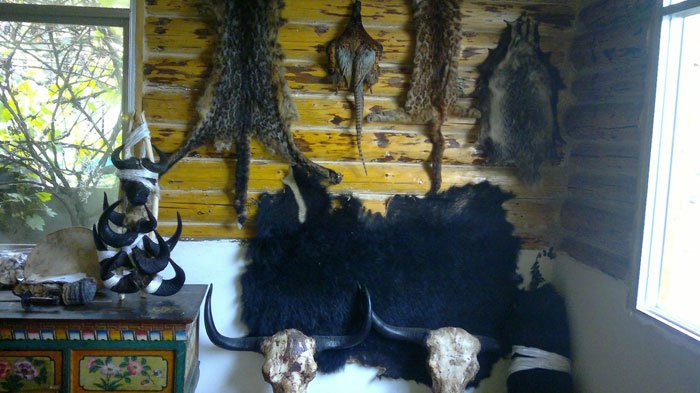 Lhoba life style
Lhoba life style
The barter animal hides, musk, bear paws and other items with Tibetans in exchange for tools and clothing. The life for Lhoba people are harsh due to the region they live and most Lhoba people are considered poor in the region. The Pemako area can be reached after weeks of jeep and foot travel so the people are still pretty much isolated.
One interesting fact about Lhoba people is that they do not lock their doors. Stealing and lying are considered heavy crimes and stealing is punished heavily, usually expelling from the village. Reoffenders are executed.
Lhoba societies are patriarchal and in the feudal past, women had no rights and had inherited nothing from their husbands and fathers. The society practices monogamy and polygamy.
On what occasion (festival or places) can tourists experience Lhoba culture and customs
Lately, tourism became a significant source of income for Lhoba people. Today, one of the most important Lhoba settlement is Caizhao Village, which is created by resettling mountain villages in 1985. Caizhao Village now has a small village with Lhoba features, a folk customs museum. Village square is also an important place to experience Lhoba culture and customs as Lhoba regularly gather in the village square to perform their Dances and Songs for (small) Tourist Groups.
Annual Lhoba Ethnic Custom Festival of Nanyigou Township is the best way to experience Lhoba culture. Attracting large number of tourists, many dance and song teams in traditional costumes perform during the festival.
Xudulong Festival is the most special Lhoba festival which is celebrated on the second month of Tibetan calendar. Known as Donggeng Gurumu (meaning something like “congratulate the safety of the current year and look forward to a bumper harvest in the coming year”), the festival witnesses Lhoba people butchering cattle and pigs to be given as presents to the maternal relatives. The skull of the consumed animal is held in front of the houses to symbolize diligence and wealth.
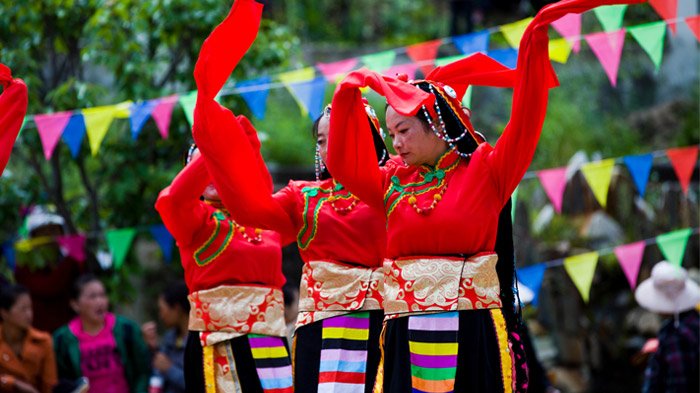 Lhoba festival
Lhoba festival
Today, most Lhoba people celebrate The New Year Festival but their celebration date and style is different than typical Tibetan. The new year is celebrated three times, as each harvest is seen as a different year (on November the 1st, December the 1st and January). All Lhoba tribes celebrate The New Year after heavy harvesting and many also like to hold wedding ceremonies during the new year celebrations.
Where you can Meet Lhoba People when Taking a Tibet Tour
Presnetly, most of Lhoba people are living in Nanyi Valley of Milin County, Nyingchi, Damu town of Motuo County, Yu town of Longzi County, Shannan and other two around places. For the tourists, we couldn’t meet them for a regular Tibet tour because of isolation and quarantine.

Kham Sang is responsible and honest with more than six years of guide experience in Tibet.She has strong interpersonal skills and can communicate effectively with tourists.


.jpg)




0 Comment ON "Lhoba People in Sountheast of Himalayas"